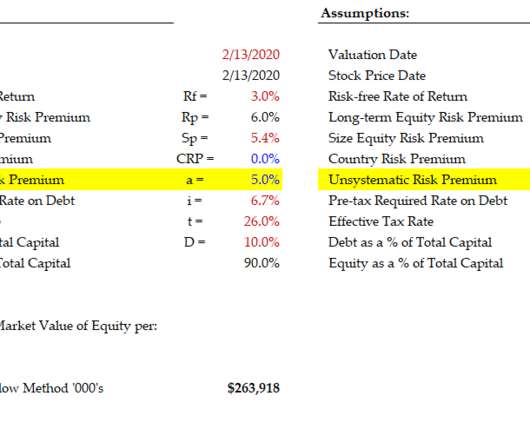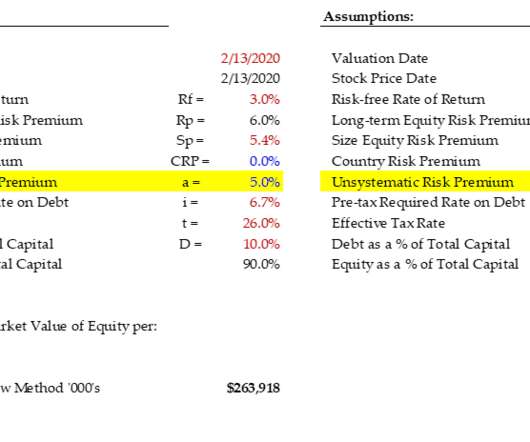ESG Valuation Considerations – Top Down or Bottom Up?
Value Scope
JULY 21, 2020
Intangible asset valuation concepts can and should be applied to unique ESG cash flows. This work can be used to reconcile and support an adjustment to the CAPM, then the WACC, via Alpha and Beta. Obviously the lower the discount rate, the higher the valuation, all other items held constant.












Let's personalize your content